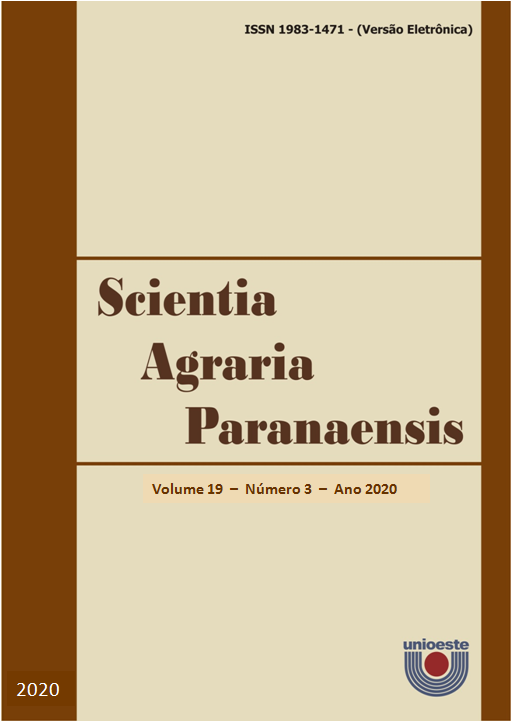Antifungal activity of Cinnamomum zeylanicum bark natural extract subjected to xylophagous fungi
DOI:
https://doi.org/10.18188/sap.v19i3.24285Resumen
The search for natural wood preservatives is becoming increasingly evident due to industrial preservatives presenting several environmental restrictions, such as soil, water and ecosystems contamination. Therefore, the objective of the present study is to evaluate the antifungal activity of Cinnamomum zeylanicum bark natural extract subjected to rotting fungi. In order to obtain the aqueous extract, two methods were performed with different concentrations, 50 and 100 g L-1, using Pycnoporus sanguineus e Gloeophyllum trabeum, mycelium. In the first, we kept the C. Zeylanicum bark with distilled water for 1 h in water bath and, in the second, the same concentrations were used, however, this was kept in a recipient for 24 h. Then, the extract was subjected to sterilization along with the BDA medium in autoclave at 120ºC for 20 min, they were then put in petri dishes for later evaluation of the mycelium root growth compared with the control. The fungi Pycnoporus sanguineus presented higher fungal activity, obtaining total inhibition of all treatments and extract concentrations, however, for the fungi Gloeophyllum trabeum, the 100 g L-1 concentration warmed in water bath obtained a better result than the others. Therefore, it can be concluded that the Cinnamomum zeylanicum aqueous extract presented inhibitory potential. Considering this, we suggest that more studies with this thematic should be carried out, seeking to discover new alternatives for wood preservatives that are less damaging to the environment and to mankind.
Descargas
Publicado
Cómo citar
Número
Sección
Licencia
Aviso de Direito Autoral Creative Commons
Política para Periódicos de Acesso Livre
Autores que publicam nesta revista concordam com os seguintes termos:
1. Autores mantém os direitos autorais e concedem à revista o direito de primeira publicação, com o trabalho simultaneamente licenciado sob a Licença Creative Commons Attribution que permite o compartilhamento do trabalho com reconhecimento da autoria e publicação inicial nesta revista.2. Autores têm autorização para assumir contratos adicionais separadamente, para distribuição não-exclusiva da versão do trabalho publicada nesta revista (ex.: publicar em repositório institucional ou como capítulo de livro), com reconhecimento de autoria e publicação inicial nesta revista.
3. Autores têm permissão e são estimulados a publicar e distribuir seu trabalho online (ex.: em repositórios institucionais ou na sua página pessoal) a qualquer ponto antes ou durante o processo editorial, já que isso pode gerar alterações produtivas, bem como aumentar o impacto e a citação do trabalho publicado (Veja O Efeito do Acesso Livre).
Licença Creative Commons
Esta obra está licenciada com uma Licença Creative Commons Atribuição-NãoComercial-CompartilhaIgual 4.0 Internacional, o que permite compartilhar, copiar, distribuir, exibir, reproduzir, a totalidade ou partes desde que não tenha objetivo comercial e sejam citados os autores e a fonte.


